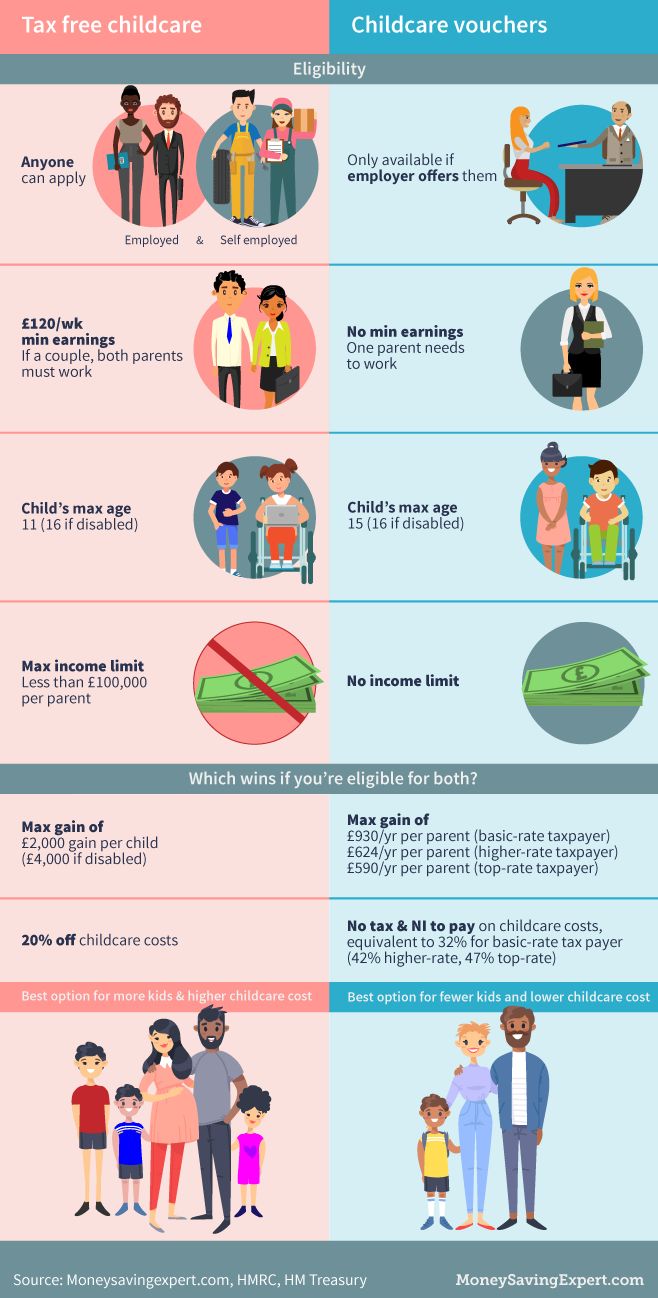If you already use the childcare voucher scheme or you’re thinking about enrolling your child in childcare and you want to know what support you’re entitled to, you’ll want to know how the upcoming system changes will affect you.
From April 2018, the voucher scheme will close to new applicants and it will be replaced by Tax-Free Childcare, which you can already apply for now.
“The changes the government has made to the childcare voucher scheme will affect parents across the country,” Richard Conway, founder of Childcare.co.uk told HuffPost UK.
“It works on a per-child basis rather than per-parent basis and benefits larger and single parent families as of April this year.”

Conway continued: “The previous scheme limited the vouchers to parents who had been offered them through work, so if you worked for a business that didn’t apply the scheme or were self-employed, you missed out.
“Although there are more regulations to the new scheme and there will always be someone who loses out, I think that the new ‘Tax-Free Childcare’ scheme will help more parents out financially with childcare.”
These changes are likely to throw up a lot of questions for parents, so we’ve put together a guide to what you need to know.
What are childcare vouchers?
Childcare vouchers are an employee benefit that working parents whose employer is signed up to the scheme are eligible for up until April 2018. You can take up to £55 a week of your wages as childcare vouchers, which you don’t pay tax or National Insurance on.
How much you can take depends on the amount you earn and when you joined the scheme.
I already use childcare vouchers, what is going to happen to them?
The government website states if you already get childcare vouchers, you’ll be able to continue to get them for as long as your employer runs the scheme, or as long as you stay with your employer. If you change jobs or your employer stops running the scheme you can apply for the tax-free childcare scheme instead.
You cannot recieve childcare vouchers and sign up to the tax-free childcare scheme at the same time.
Can I still sign up for the childcare voucher scheme?
After reading this guide, if you believe childcare vouchers will work for you but you have not yet signed up, you can still do this before 6 April 2018.
You need to make sure a) your employer is offering the scheme and b) you already have a child in childcare to start claiming for before 6 April.
On 6 April 2018, the scheme will close to new applicants.
What is tax-free childcare?
Oddly enough it doesn’t have anything to do with the income tax that comes off your earnings.
Rather than having a tax-free allowance for childcare, under the new scheme, eligible families will get 20% of their annual childcare costs (up to £2,000) paid for by the government.
Gov.co.uk states that the government will pay £2 for every £8 you pay your childcare provider, via an online ‘Childcare Account’.
You can get up to £500 every three months (£2,000 a year) for each of your children to help with the costs of childcare.
The government’s payments are capped at £2,000, so if you pay in more than £8,000, you will receive no extra help.
That is, unless your child is disabled, in which case the government will pay up to £4,000 a year until they’re 17.
How can I spend the money in my tax-free Childcare Account?
You can use the money to pay up to 10 childcare providers directly, included is:
:: Childcare with regulated (approved or registered) childcare providers, for example, nurseries, play scheme, registered childminders or out-of-hours school clubs.
:: The costs of employing a nanny or extra childcare if using a workplace nursery.
You can withdraw your money from the account, but if you do, for every £8 you take out, the government will also take back its £2 contribution.
How do I know if I’m eligible for tax-free childcare?
There is criteria you will need to meet.
You must:
:: Have one or more children aged under 12 (who lives with you) when the scheme starts in 2017. Adopted children are eligible but foster children are not.
:: Work at least 16 hours at week at National Minimum Wage (which works out to be £120 if you are over 25). If you are in a couple, both of you need to be working 16 hours a week. This does not apply if you’re self-employed and started your business less than 12 months ago.
::: Earn under £100,000 a year (either you or your partner).
:: Not claim tax credits.
:: Make sure your childcare provider is signed up to the scheme before you pay them.
Other things to note:
You can still apply for if you’re on paid sick leave, or on parental leave or adoption leave or getting Maternity Allowance. You can also apply if you’re not working, but expect to start a new job in the next 14 days.
You may still be able to get Tax-Free Childcare, if you aren’t in work but you get Incapacity Benefit, Severe Disablement Allowance, Carer’s Allowance,
contribution-based Employment and Support Allowance or National Insurance credits because of incapacity or limited capability for work.
So what about the 30 hours of free childcare?
Gov.co.uk states you can still apply for Tax-Free Childcare if you get: child benefit; 15 hours free childcare for children aged two to four years old or 30 hours free childcare.
You’ll be able to apply for 30 hours free childcare and Tax-Free Childcare in a single online childcare service application.
If you’re eligible, you will have a childcare service account opened for you (and you only need to complete one application for all your children).
You can find out more about the 30 hours free childcare system and how to apply with our guide here.
How do I apply for tax-free childcare?
You can apply and set up an online childcare account via Childcare Choices. It will take around 20 minutes.
Make sure you have your (and your partner’s, if you have one) National Insurance Number to hand (or your Unique Taxpayer Reference if you are self-employed).
You can pay in as much, or as little, as you’d like and are under no obligation to make regular payments. Other people, such as family members and employers, can also pay into your account.
How do I know which scheme is best for me?
Generally speaking, as Conway pointed out, the tax-free childcare system is better for couples who have more than one child and therefore may have high childcare costs. It’s also better for those who earn less than £100,000.
If you are freelance or self-employed and wouldn’t have previously been eligible for childcare vouchers, the tax-free scheme is great news for you - as you’ll be entitled to an additional £2,000 per year towards childcare that you didn’t previously receive.
Childcare vouchers are likely to be better for couples with fewer children, where one parent doesn’t work or where one parent earns more than £100,000 a year.
MoneySavingExpert.com highlighted a clear way to work out if childcare vouchers are better for you.
The vouchers are more financially suitable for:
:: Basic-rate taxpayer parents with total childcare costs of £9,336 or less. Under this amount, the saving you make with childcare vouchers exceeds the saving you can make with Tax-Free Childcare.
:: Higher-rate taxpayer parents with total childcare costs of £6,252 or less. Under this amount, the saving you make with childcare vouchers exceeds the saving you can make with Tax-Free Childcare.
Their graphic also makes things a little easier to understand (and you can read more in the MoneySavingExpert guide here).

You can check which childcare option is the best offer for you using the government’s childcare calculator.
Bear in mind that if you apply for tax-free childcare, you won’t be able to get Child Tax Credit, Working Tax Credit, Universal Credit or childcare vouchers from your employer.
You can get more information about free early education and childcare from your local council or by going to find free early education and childcare on gov.uk.